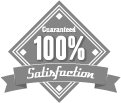Interior design in a workplace starts with paint colours and finishes. The first step is to select a colour palette and decide on the interior tone of the room. The largest spaces are the walls and flooring, so getting it right in colour choice matters. Often large corporate companies pay an interior designer to make these choices but this is not a realistic option for a lot of businesses. So the following design tips and tricks can help when designing an office or workspace.
Choose a Paint Colour First
Where to begin is often the first issue, it can seem overwhelming when looking at a large space like an office and know where to start. Looking at paint colours will actually help guide the overall interior design process. This is because you can use the paint colour as a base for all other colour choices, like carpets and furniture.
The paint colour choice for offices should be tied into the type of business run in the space. For example, a financial office is likely to be better served by cool, light paint tones and a digital media office can be a little bolder with more warm and colorful tones. If you workplace has a brand or logo then take this with you to paint supplier or have it on hand when looking at paint swatches. It may be that the foyer or a feature wall is painted in bolder colours and the rest of the office in cool neutral tones. But they all need to work together. Take a look at a list of paint colours that work well together. And keep your brand colour in mind.
Decide on a Colour Scheme
There are three main colour schemes to design an interior from. Decide on a colour scheme and select your paint, floors and furnishings around your colour scheme.
1. Monochromatic Colour scheme
This is referred to as a basic colour scheme design, but that does not mean basic in looks. It simply means using variations of one colour. Taking one colour and displaying tones and shades of the singular colour. It is an uncomplicated design that gives of a relaxed and professional vibe. The uniformity created from monochromatic design lends itself very well to workplaces and also makes the process simpler when selecting colours and furnishings.
Monochromatic colour scheme can also be a black and white design, which is a timeless and elegant design suited to many different businesses. Think crisp white walls, dark carpet and black office furniture. This also works with most logos and brand colours as black and white will not clash with any colour.
2. Contrasting Colour Scheme
A contrasting colour scheme is using two colours opposite on the colour wheel. For example red and green or purple and yellow. Often graphic designers employ this colour scheme when designing logos. Now it is not usual to see a workplace with yellow walls and purple floors! But this can colour theory can be used with accent walls or accent pieces. Your paint colour decision in contrasting colour design needs to match warm or cool colours. For instance it may be a cool mossy green paint in meeting rooms, the foyer and lunch rooms matched with cool brown taupe walls throughout the rest of the office.
A warm contrasting paint office design may be a warm golden yellow contrasted with a warm magenta hue. And this could be a light shade of magenta on the walls with some feature walls in the foyer of golden yellow.
Harmonious Colour Scheme
This refers to three colours on the colour wheel that are next to each other. As the colours are neighbours to each other the look creates cohesion and harmony. If you want to have some colour in your office but still keep it clean and professional then this colour design scheme is great because all the colours will work seamlessly and not clash. The scheme brings a flow and can be easily worked into furnishings and decorations.
Colour Psychology in the Workplace
Is the the use of colour effective in increasing productivity through influencing staff? It is proven that colours influence moods and reactions in people. So why not use this theory to help your business goals!?
The following are examples of common colour schemes in workplaces.
Red
Bold and intense – red certainly invokes feelings in people. It actually causes physical symptoms such as increased heart rate and induces hunger. Think about popular takeaway chains and you realise how many incorporate red into their design. Red is great for workplaces that want high energy and productivity. It is also thought to create an illusion if time passing quicker. These qualities can make red a great colour for call centres and sales offices.
Yellow
Sunny and bright, yellow is aligned with innovation and positivity in the world of colour psychology. Think of yellow for create workplaces like advertising, the arts, hairdressers, architecture firms, fashion and publishing. It can also be used to foster an innovative environment in meeting rooms and training rooms in workplaces. Used well in shops, yellow creates a happy environment for customers and a warmth to the space. Which can keep customers browsing for longer.
Blue
The intellectual one in the colour world, blue is known to stimulate the brain. And with blue being so prevalent in the world, think skies and seas, blue is very effective for inducing certain feelings just based on what shade of blue is used. A strong blue is used to bring better concentration and a lighter shade of blue will bring a tranquility through actually triggering the brain into a more tranquil state. If your workplace needs concentration and a calming environment then blue is perfect. Associated with security and trust, blue is popular for financial institutions, doctors, dentists and science industries.
Green
The colour of nature, green is a colour of balance and peace. But if it is a bright shade of green then it is more stimulating. So for workplaces that would like to create a calming environment then green is the answer. For example medical centres, massage therapists, chiropractors etc. Green is often the colour used by environmental agencies and infrastructure planning workplaces. And this is because if greens association with nature and earth.
Black
In colour psychology black is aligned with authority, strength and durability. A strong colour that is also associated with high end and expensive products. It must be used with a deft hand, as too much black in a space will feel oppressive and rigid. Black works well in in a contrasting colour scheme, so with a white monochromatic design. A serious statement colour, used well in workplaces that aim to present elegance and authority.
Remember to speak to professional painters like our team at Qpaint for help in designing paint schemes. We live and breathe paint and colour is our workplace!






